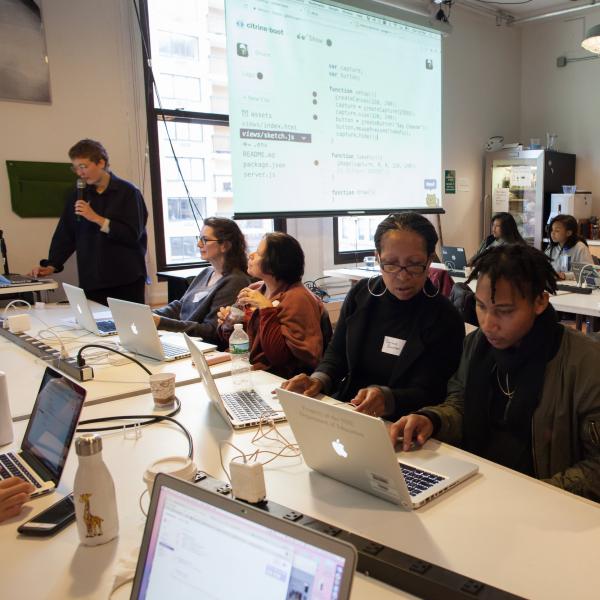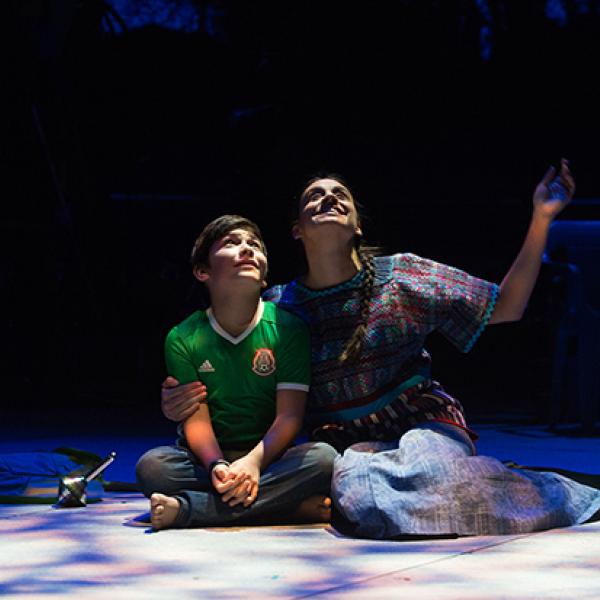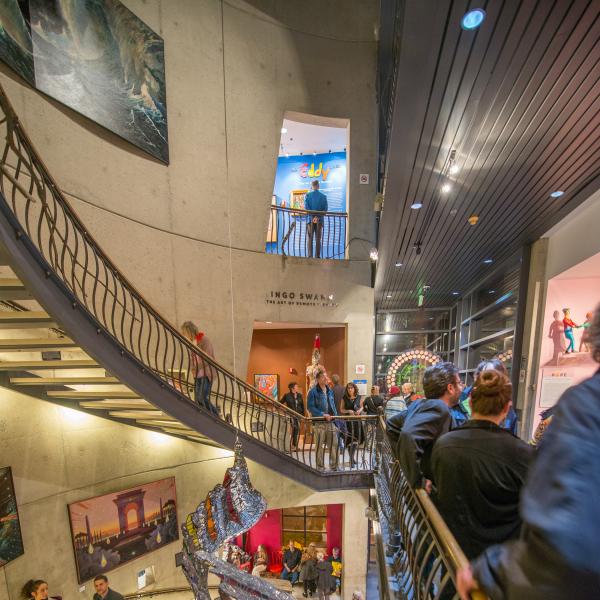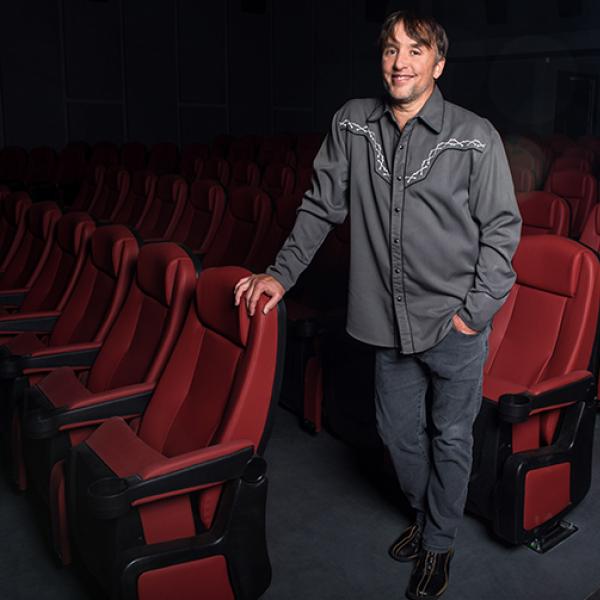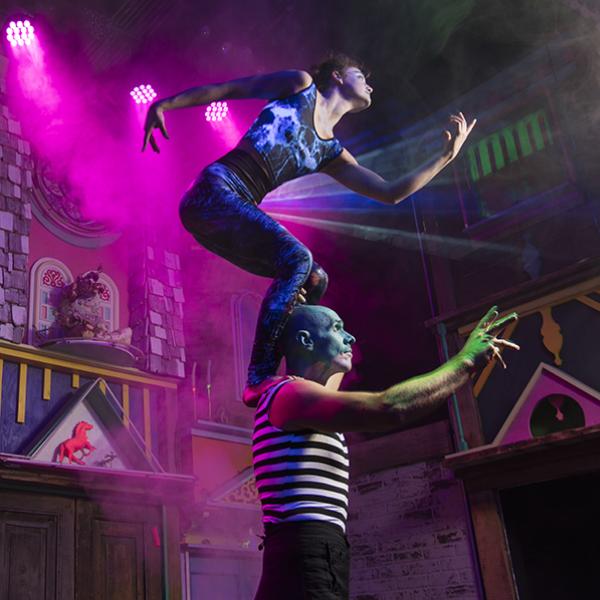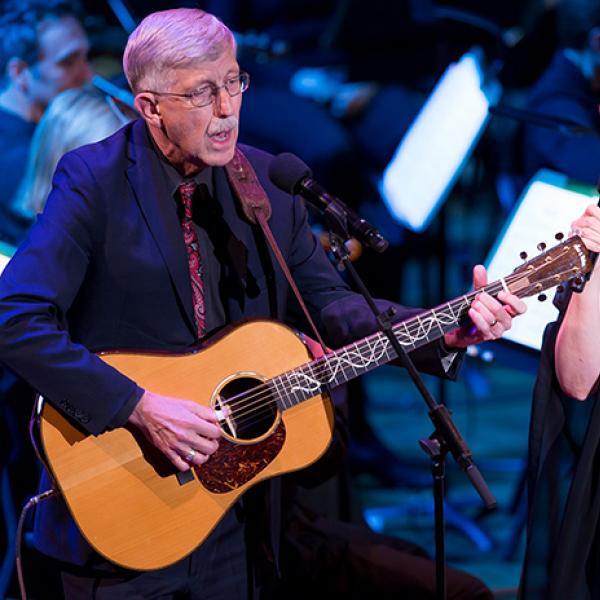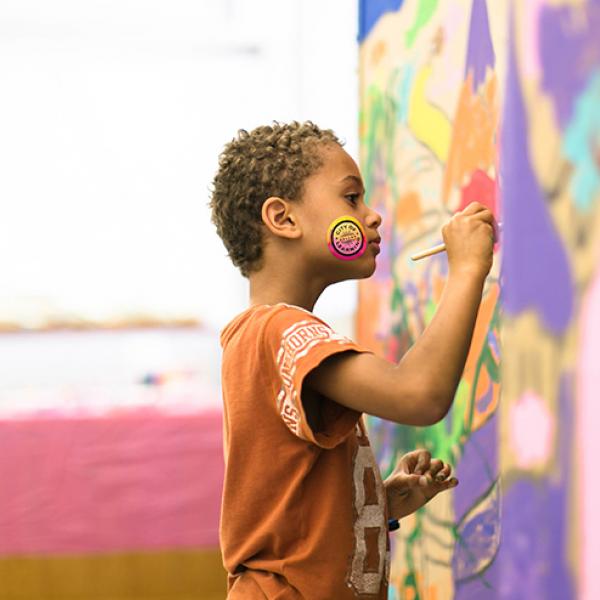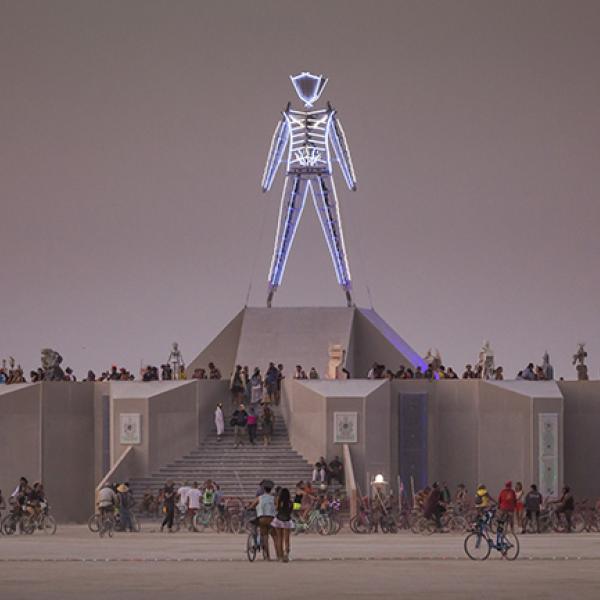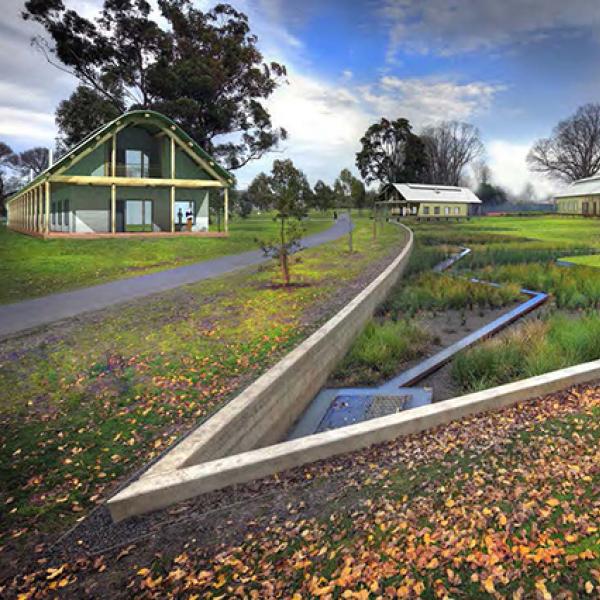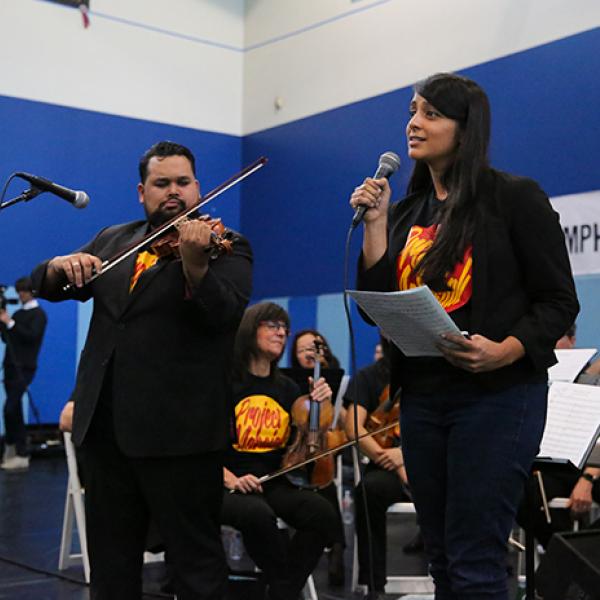A Legacy of Innovation
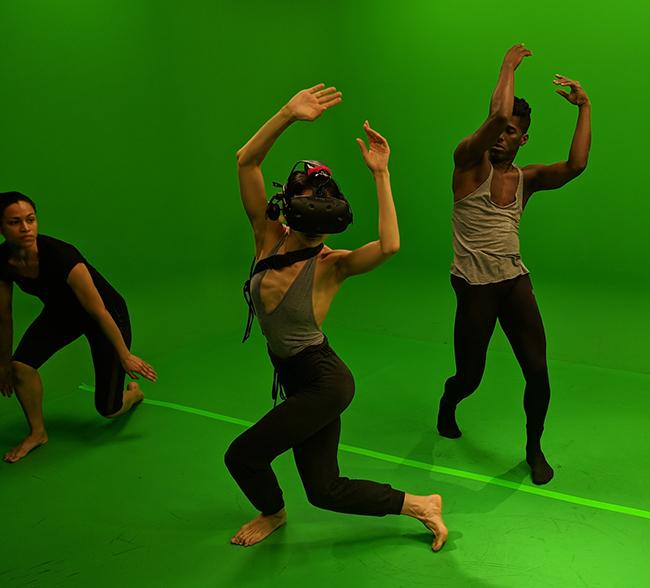
How does an artist who emerged in the 1920s remain a guiding light today? How does a vision for American dance, born in the era of vaudeville and silent movies, lead dance into a future of virtual reality and Kinect cameras? The work of modern dance revolutionary Martha Graham offers us a moving case in point of how an artist can speak to her time as well as ours.
Born in 1894, Graham was a student and performer—and later on a teacher—with Denishawn, a dance school and company led by Ruth St. Denis and Ted Shawn. Their dances combined the showmanship of vaudeville with a visual and spiritual exoticism based on their interpretations of ancient cultures such as Egyptian, Indian, and Aztec. Graham left the organization in 1923 and started her own school three years later. It remains the oldest continuous dance school in the United States.
As Graham developed her revolutionary style of sharp, angular movements fueled by emotion, she sought to create an authentically American form of dance. She has frequently been referred to as the “Picasso of Dance,” a nod to her bold vision and unparalleled influence.
Janet Eilber, the artistic director of the Martha Graham Dance Company since 2005, has continued Graham’s pioneering spirit, experimenting with and extending Graham’s core collection of works. As part of these efforts, Eilber has embraced technology, making the company as innovative offstage as it is when seen by live audiences.
For example, in an effort to discover new platforms for Graham’s technique and dances as well as more ways for audiences to engage those works, the Graham company was the first to webstream rehearsals and to have concert program notes accessible via smartphone.
Since 2011, the company has also worked with Google on different projects, bringing together two visionary companies in their respective fields. In that initial year, Google approached Eilber about their interest in a Google Doodle to celebrate the 117th birthday of Graham’s birth. The doodle featured a dancer vaulting through five classic Graham poses, capturing “seven decades of American innovation into 15 seconds,” according to the Martha Graham website.
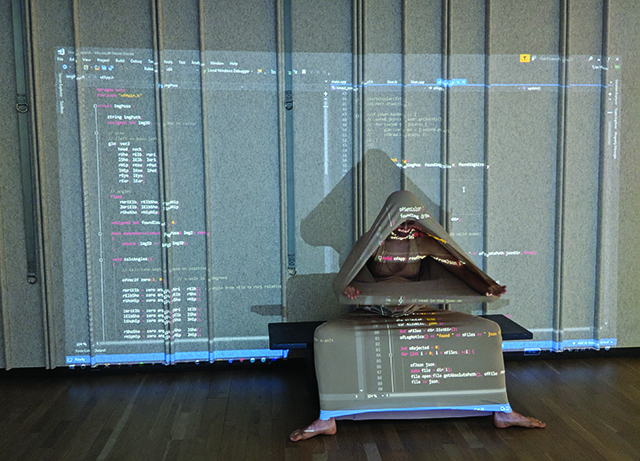
|
The Graham company partnered again with Google to create the Martha Graham Dance Company’s collection on Google Arts and Culture. Organized by former company member and director of Martha Graham Resources, Oliver Tobin, the collection is the first of a dance company to be featured on the Google Arts and Culture app. Supported by the National Endowment for the Arts, the project transformed digitized films, videos, and photographs into online exhibitions, charting more than 90 years of innovation. Through the project, Eilber wants to remind visitors why Graham was considered radical in her time. “Modern dance is such a young and ephemeral art form that it has no tradition of reflection on its past or its historic influence,” she said.
The exhibitions are also inspiring the dance company to look into new technological approaches to providing education to a new generation of dancers. Initial experiments have taken place with motion capture suits to create virtual reality avatars of the dancers. The ultimate goal is to be able to use that technique to capture a 360-degree virtual reality, allowing students to view the movements from all sides. The dream is to eventually have an education portal that students can use to study dance.
Most recently, Graham’s historic influence extended into the realm of alternate and virtual realities. In May 2018, the Martha Graham Dance Company was invited to participate in a two-week residency with Google technologists, media artist Tyler Henry, and visual artist SoHyun Bae to explore Graham’s work in settings that were significantly infused with technology.
In a May 25, 2018, article in the New York Times about the residency, Google’s project lead, M.J. Newman, noted the company’s “forward-thinking mentality” as the reason that Google chose the Graham company. “The Graham Center has always been very eager about being on the cutting edge of technology and looking for what’s new,” he said. “They were the first ones that jumped into my head.”
One of the experiments in the residency involved Graham’s iconic work Lamentation, a solo dance piece for a woman shrouded inside a tube of pliant fabric that is manipulated in expressions of grief and anguish. The work was performed by Natasha Diamond-Walker in the traditional costume (albeit a nude color rather than the original lavender) that incorporated two layers of technology that extended the visual and emotional impact of the piece. The technologist, Henry, used chronophotography, a technique going back to the Victorian era that captures movement in several frames that can be sequenced for animation or layered within a single image. Through Henry’s use of the technique, Diamond-Walker’s movements left behind diaphanous ripples like flower petals.
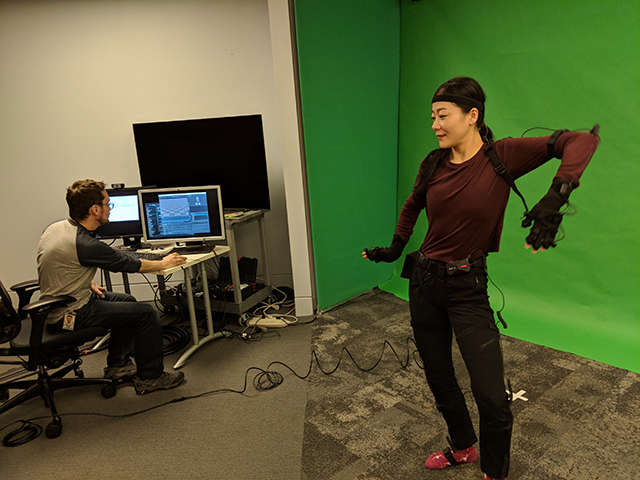
|
Henry also had a Kinect camera, a motion detection device that was programmed with videos of other dancers performing Lamentation—including Graham herself—that became part of the real-time performance. Diamond-Walker’s gestures triggered the data system so that for a few seconds she would be dancing with artists from the past.
Diamond-Walker describes it as a “very supernatural feeling, a little bit ghostly.” She added, “It had a sort of interconnectedness through the generations for me. It was very emotional to actually be performing [Lamentation] and seeing other people moving through those same emotions at the same time with you. It was really something I had never experienced before and definitely informed my movement as I was going along.”
In another venture in the residency, Diamond-Walker wore virtual reality headgear that had been loaded with a virtual environment called Pelvic Terrain that SoHyun Bae created using Google’s Tilt Brush, a virtual reality tool that lets users draw in 3D space. While Diamond-Walker explored the virtual environment with her eyes and body, three other dancers without any gear joined her, taking cues from her to inform their own movements.
Would Martha Graham have approved of these ventures? Diamond-Walker thinks so. “When I think of Martha Graham, I think of her as a very forward-thinking innovator [who might have thought] ‘What’s next? I created Lamentation, it’s been around for X amount of years, what can now be done with it aside from putting a picture of it on a T-shirt or a backpack?’ So I think that she would have definitely been in support of experimenting and discovering through what I was doing.”
Eilber agrees. “The main focus of our work today is to honor Martha’s ‘appetite for the new’—her legacy of innovation,” she said.


